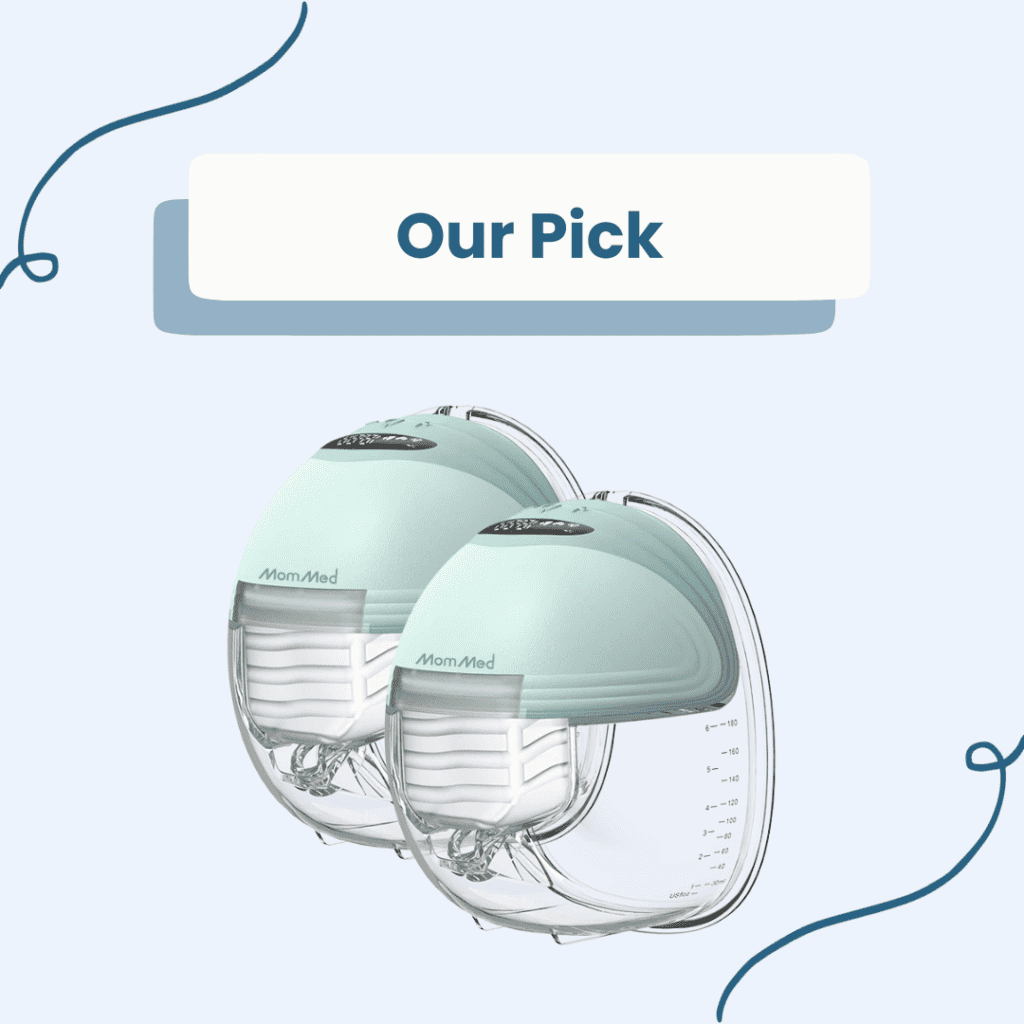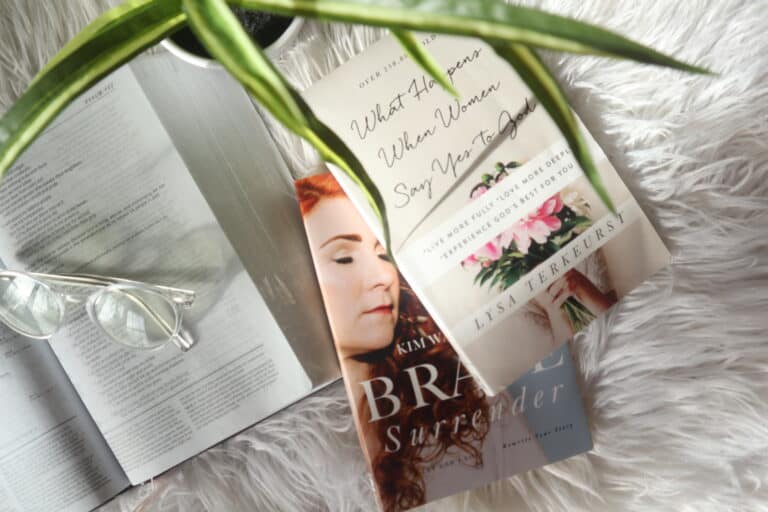Best Wearable Breast Pump: Essential Guide for New Moms
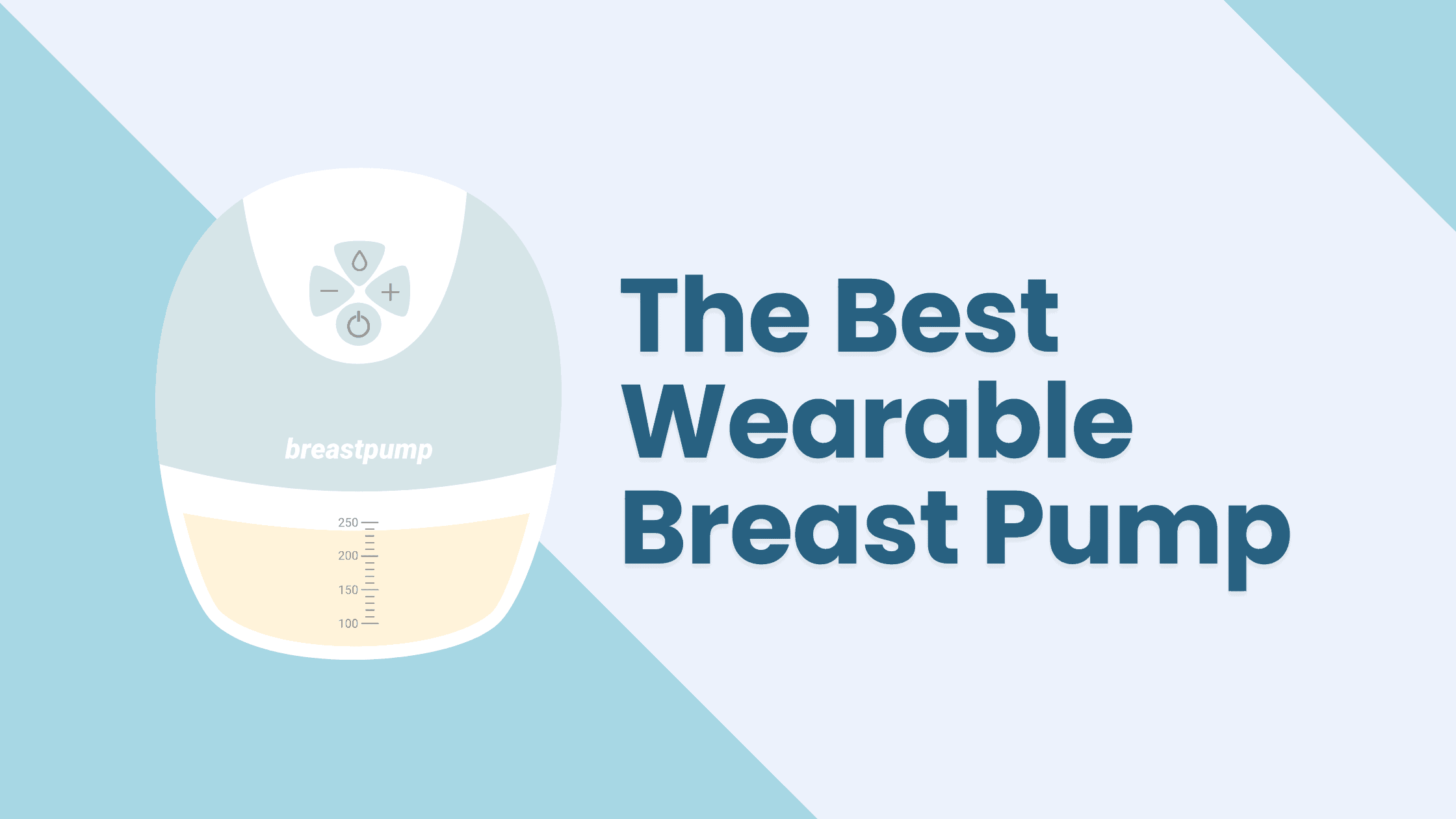
Last Updated on October 30, 2023 by Avi Steen
Remember when pumping breast milk meant being tethered to a bulky machine? Those days are long gone. With the best wearable breast pump, you’re free to move around, work, or simply relax while collecting that liquid gold.
This isn’t your grandma’s breast pump – it’s more like a smartphone for your chest.
Think of hands-free operation, compact design, and even connected apps for tracking sessions. Are you intrigued yet?
You may ask yourself: “Which is the best option in this tech-savvy world of wearable pumps?” That’s why we’re here, sis.
We’ll dive into top-notch options along with affordable wearable breast pump contenders.
We’ll also navigate through key factors every mama should consider before investing in these life-changing devices…and trust us; they’re game changers!
So, let’s get to collecting milk on the go.
This post may include affiliate links in which I receive a small commission at no cost to you. Please see our full disclosure here.
What Are the Best Wearable Breast Pumps?
We know the world of wearable breast pumps can be overwhelming. So, we’ve analyzed the top options to give you an easy-to-digest review.
1. MomMed S21 Wearable Breast Pump
The MomMed S21 wearable breast pump is a discreet and comfortable device compared to other wearable pumps. It includes features like a double-sealed flange, long usage time on a single charge, auto-shutdown, and a significant 180ml capacity.
Key Benefits
- Comfortable and Discreet Design: Weighing only 230g, the S21 is compact and designed for discretion.
- Personalized Settings: With three modes and 12 levels of suction, users can fine-tune settings according to their comfort and pumping needs.
- Long Usage Time: Offering up to 150 minutes of usage on a single charge, reducing the need for frequent recharging between pumping sessions.
- Leak Prevention: The double-sealed flange ensures a secure fit, minimizing the chances of leaks during pumping.
- Auto-shutdown Feature: Convenient 30-minute auto-shutdown function for safety and power-saving. It’s like a sleep timer for your pump.
Pricing
$119.99
Pros & Cons
The MomMed S21 wearable breast pump provides personalized comfort through multiple settings, strong suction, and a leak-resistant breast shield. It’s the most cost-effective on the list and doesn’t sacrifice quality.
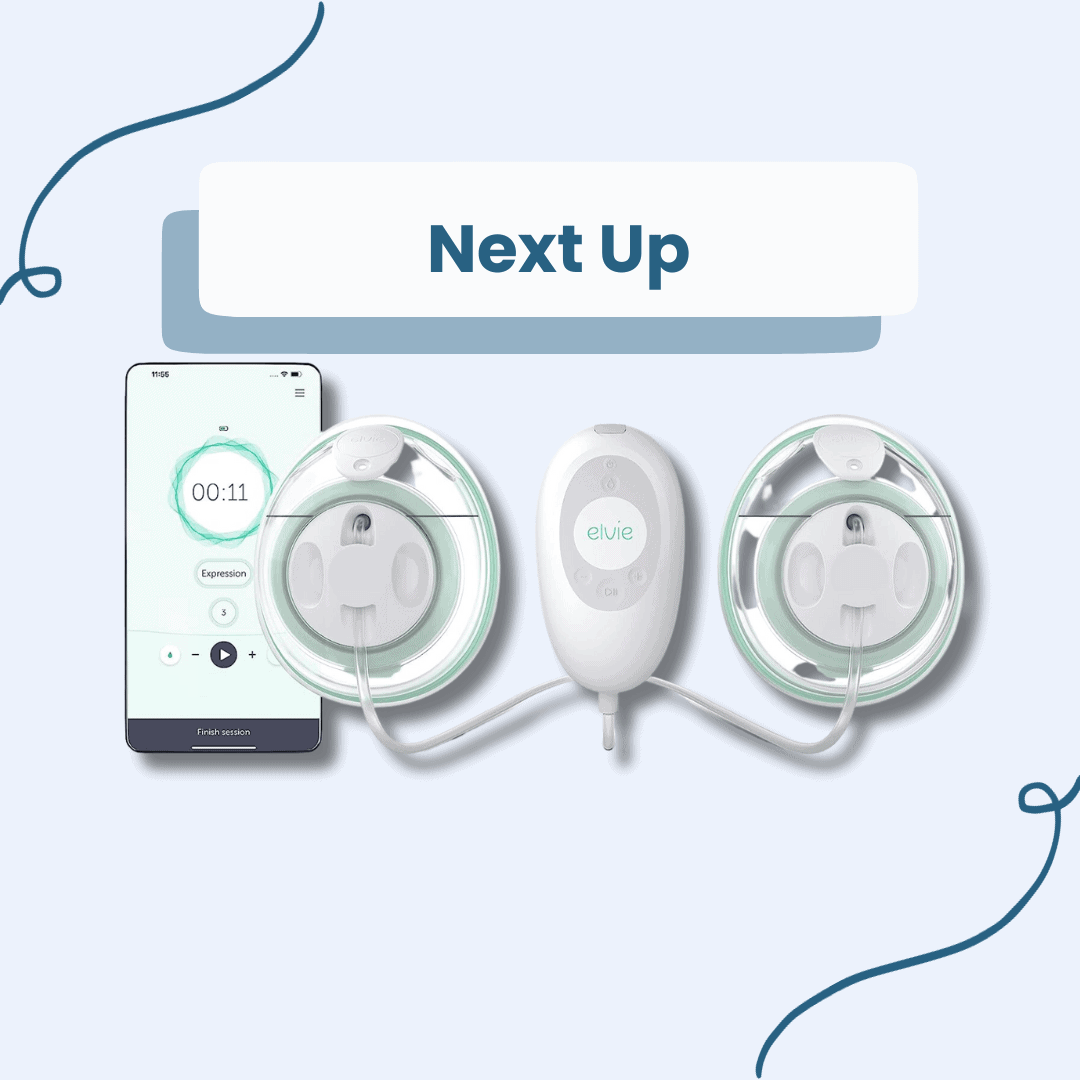
2. Elvie Double Electric Breast Pump
The Elvie Stride, a hospital-grade strength wearable pump, offers double electric pumping and is our next option. It’s discreet under clothing, allowing for hands-free pumping on the go.
Key Benefits
- It works better than my electric pump at emptying.
- It is super quiet and perfect for pumping at night.
- Hands-free and very comfortable.
Pricing
$259-269
Pros & Cons
You’ll appreciate its mobile app that tracks milk volume in real time and controls suction levels. But remember, getting used to pouring milk from collection cups without spills might take some time.
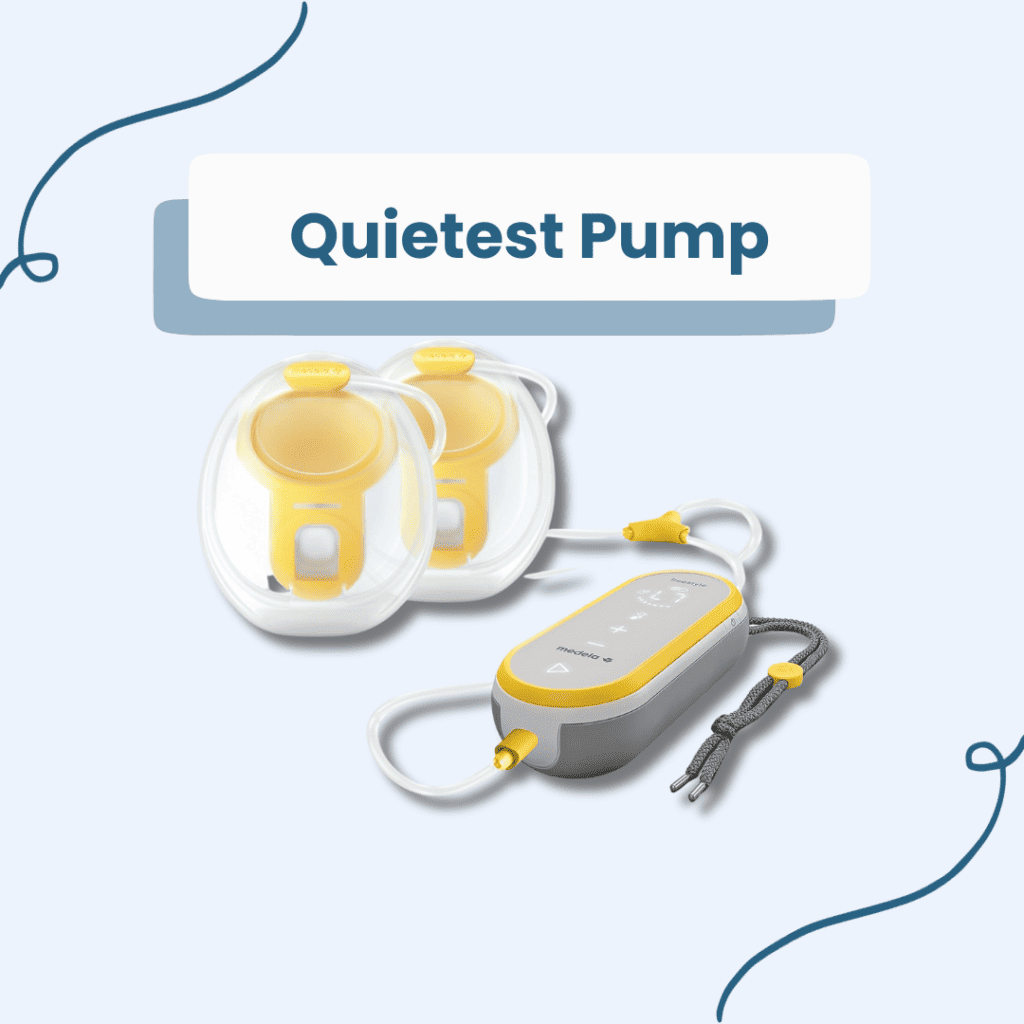
3. Medela Freestyle Wearable Breast Pump
If ease-of-use tops your priority list, consider the Medela Freestyle Hands-Free Breast Pump. With high marks for comfort and efficient milk extraction capabilities—this one is hard to beat.
Key Benefits
- Insanely quiet and can use the breast pump anywhere
- Cleaning is easy with not a lot of parts
- Interchangeable parts with the Electric Pump In Style
Pricing
$349
Pros & Cons
A bonus? It has an excellent battery life. However, sometimes it can be hard to take apart for cleaning.
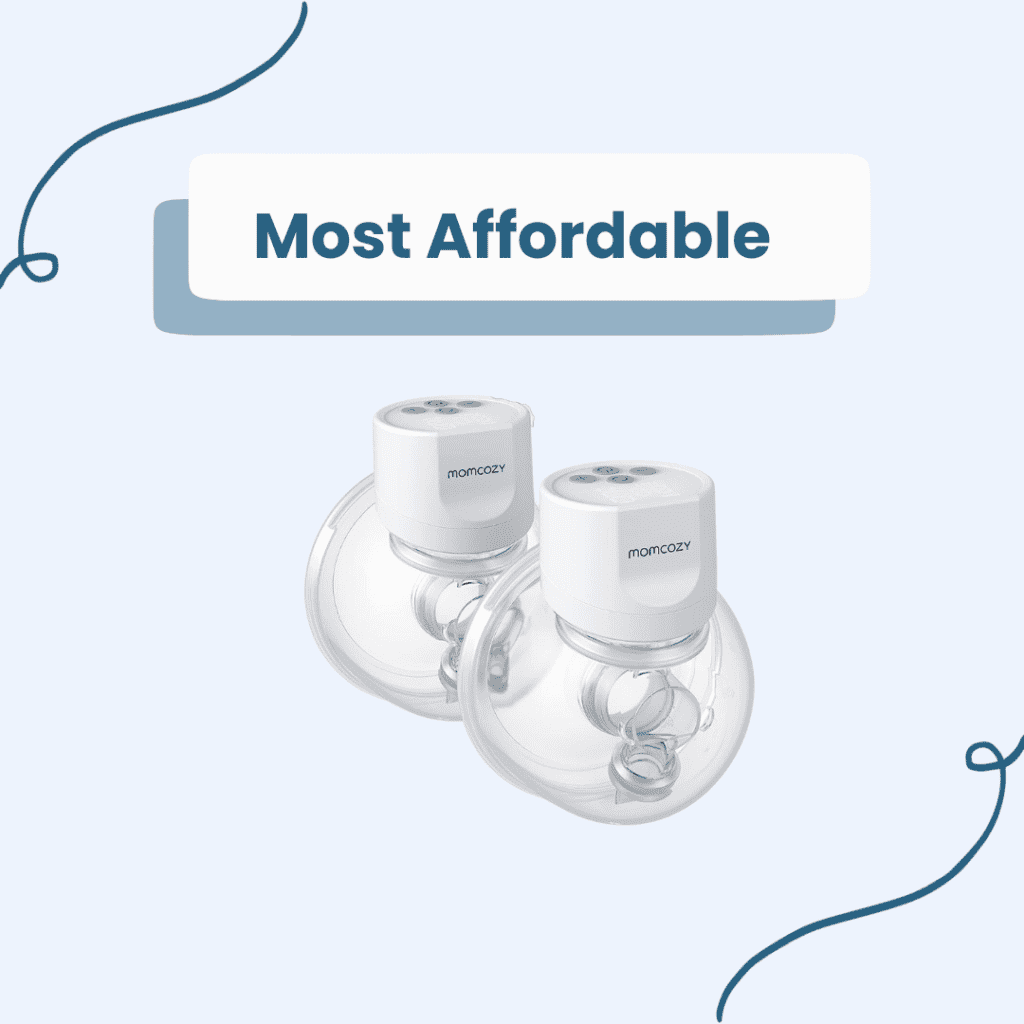
4. Momcozy S12 Pro
Momcozy S12 Pro may not have all the bells & whistles like others, but it certainly holds its own in functionality—and at a fraction of the cost.
Key Benefits
- Comfortable and effective in increasing supply
- The suction power is great
- Option to buy double or single
Pricing
$79-$139
Pros & Cons
This portable pump is super affordable. However, initially, there’s a learning curve to ensuring it seals properly for the best suctioning.
Factors to Consider When Choosing a Wearable Breast Pump
Considering the various factors to consider, choosing a wearable breast pump is not easy. The right choice hinges on several factors that we’re about to explore.
Comfort
The initial thing to mull over is coziness.
Because there’s nothing more annoying than an uncomfortable pumping session.
A comfortable wearable pump setup involves the flange size, which should be just right – neither too large nor too small. Wrong sizes can lead to sore nipples or low milk supply, making your pumping session an ordeal.
Ease of Use
Next up: ease of use. If we wanted things to be more difficult, we’d just plug in the traditional pump.
Look for pumps with intuitive controls and clear instructions; this will make your life so much easier. An easy-to-clean design also counts as it cuts down cleaning time after each pumping session.
Pumping Strength & Suction Levels
Your wearable breast pump needs adequate suction levels and strength for efficient milk extraction. But remember – higher power doesn’t always mean better.
Comfortable suction wins over forceful tugging any day.
Portability & Battery Life
A mobile pump lets you get things done while collecting precious drops of gold (a.k.a. breast milk.). And what good is portability without battery life?
Make sure your chosen pump offers ample juice per charge cycle. So if you have to pump in the school pick-up line or in the church basement (just me?), you’re ready to go.
Note: If insurance coverage comes into play when buying a wearable breast pump, policies vary by company, so check yours out in advance.
Here’s my go-to site for checking breast pump insurance.
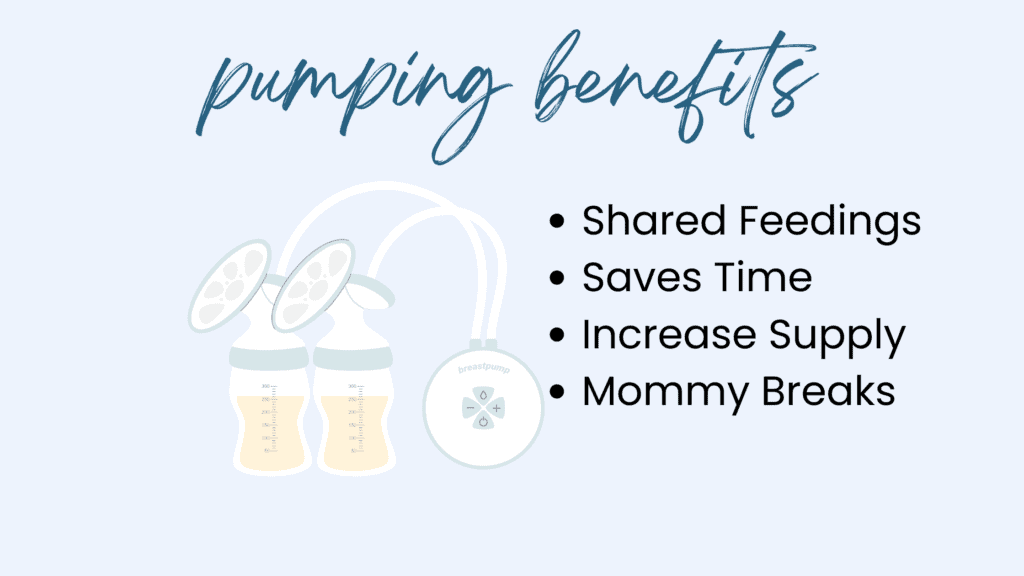
Tips for Using a Wearable Breast Pump Effectively
Getting the most out of your wearable breast pump involves more than just putting it on and letting it work.
It’s about knowing how to avoid common pitfalls, like low milk output, and understanding how to fully charge your pump.
Avoiding Common Pitfalls
The frustration of experiencing low milk output can be hard.
But don’t worry, mama.
The key is finding the right balance between suction levels and comfort – too high may cause discomfort, while too low might not stimulate enough milk production. Consulting a lactation expert may be beneficial if you are having trouble balancing suction levels and comfort.
Ensure your device is juiced up before beginning a pumping sesh – it’s the worst when you’re in the middle of it, and power goes out.
There’s nothing worse than running out of battery halfway through.
Finally, the most important thing to know about your milk supply is supply and demand. The more you demand, the more supply you’ll receive.
Making the Most of Your Pump
You’ve got options when it comes to using your wearable breast pump effectively; mixing and matching those options could maximize each pumping session.
According to FDA guidelines, every user has unique needs, so try different settings until you find what works best for you.
If possible, consider purchasing extra accessories like collection cups or backflow protectors – they could come in handy during unexpected scenarios such as broken parts or increased supply needs.
Building up an effective routine that ensures regular supply first thing in the morning when prolactin (the hormone responsible for making breast milk) levels are highest can give you great pumping results.
Remember, getting comfortable with any new device takes time – keep experimenting until you find what suits you best.

Why You Shouldn’t Buy Used Wearable Breast Pumps
You might be tempted to snag a deal on a used wearable breast pump. After all, they’re not cheap, and every penny counts when you’re gearing up for a baby’s arrival.
But hold that thought.
There are important safety considerations that should make you think twice.
According to the FDA, breast pumps are considered medical devices designed for individual use. This means each pump is intended for one person only due to potential health risks associated with sharing these devices.
Sure, you could sterilize it before use, but risk is still involved.
Many parts of the pump come into contact with milk, which can carry bacteria and viruses. These may linger even after thorough cleaning, potentially harming both mom and baby.
Besides health concerns, there’s also performance degradation over time – something especially true if the previous owner was an exclusive pumper or had multiple babies using the same device (Remember: they were designed as personal items.).
So even though the initial cost seems lower with a used pump, its reduced efficiency could lead you to spend more time pumping than necessary – precious moments better spent cuddling your little one.

Understanding Insurance Coverage for Wearable Breast Pumps
If you’re thinking about getting a wearable breast pump, one question that might pop up is – “Will my insurance cover it?” The answer isn’t straightforward because coverage varies across different insurance companies.
Most insurers recognize the importance of breastfeeding and the role of breast pumps in supporting this journey. Therefore, they do provide some level of coverage. However, there’s a catch.
Your policy may limit the type and model of the pump covered. Traditional pumps are often fully or partially covered, but things can get murky when it comes to wearable ones.
Only manual or basic electric models often fall under full-coverage policies.
At the same time, more advanced options like hands-free wearable pumps could be considered ‘luxury’ items and not included. Some providers might allow an upgrade with out-of-pocket expenses, though.
To navigate this maze efficiently:
- Contact your insurer directly to ask what types of breast pumps are covered under your plan.
- If your plan covers a more expensive pump, determine the amount of reimbursement you can expect.
- Consult lactation consultants who often have insider knowledge about these issues if necessary.
- Use this breast pump insurance site to check your coverage.
This process can feel overwhelming, especially during such an emotional time as new motherhood. But remember, help is available.
HealthCare.Gov provides detailed guidelines on its website, which may be a good starting point.
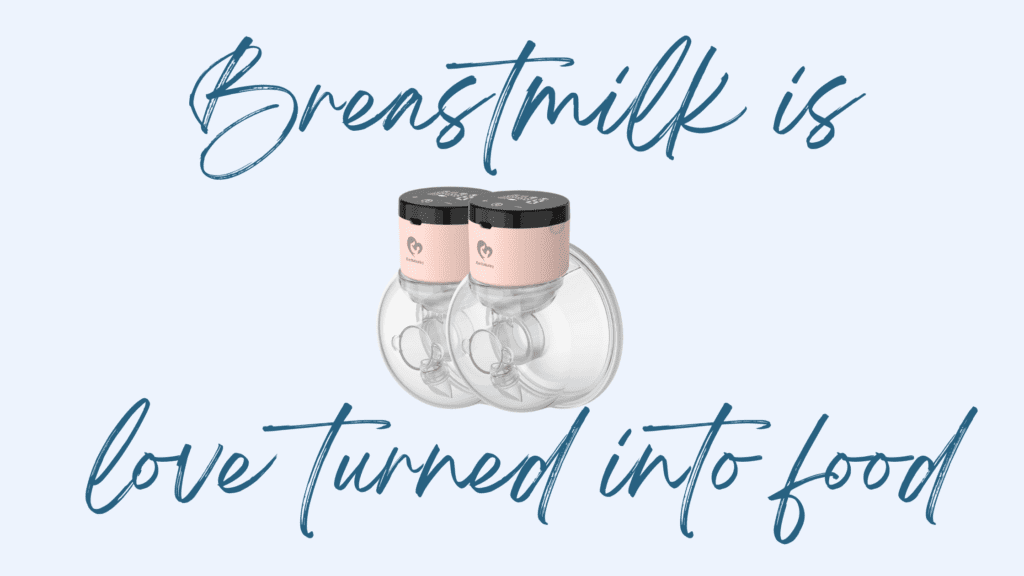
Other Tested Wearable Breast Pumps
We also gave a shot to some other wearable breast pumps that didn’t make it to our top list but still deserve an honorable mention. These include the Willow 3.0, Willow Go, and Bellababy.
The Willow 3.0 is unique for its all-in-one design, letting you pump directly into self-sealing bags or reusable containers. But the trade-off is its size – it’s bulkier than most wearable pumps.
Willow Go, on the other hand, retains much of what makes Willow great but at a more affordable price point. It offers nine suction levels and can be used with either milk collection bags or containers, just like its sibling model.
I am moving on to another competitor in this space – the Bellababy Wearable Breast Pump.
Bellababy: The Underdog Contender?
This little-known brand has been making waves with innovative yet budget-friendly products targeted toward new moms who need help pumping milk while juggling daily chores.
It’s equipped with soft silicone flanges, which provide comfortable suction while ensuring efficient milk extraction.
However, they have smaller flange sizes available compared to popular brands, so take note if fit could be an issue for you.
But hey. Who doesn’t love rooting for an underdog?
Best Wearable Breast Pump FAQ
What is the best-rated wearable breast pump?
The MomMed Wearable Double Breast Pump is highly praised for its portability, discretion, and hospital-grade strength.
Are wearable breast pumps worth it?
Absolutely. They give you the freedom to move about while pumping, making them a practical choice for busy moms.
Do wearable pumps work as well?
Yes, they do. Top models like Elvie or Medela Freestyle offer comparable performance to traditional electric pumps.
What is the best alternative to Elvie breast pump?
If you’re looking beyond Elvie, consider the MomMed Pump – it’s user-friendly and equally efficient in milk extraction.
Is Willow or Elvie better?
Willow and Elvie are both popular options, and they have their pros and cons. Willow tends to have a bit more suction power, which can be great for some moms. Elvie, on the other hand, is quieter and more discreet, which I love when I’m out and about. So, it’s all about what suits your lifestyle and comfort level.
Are hands-free breast pumps worth it?
Oh, absolutely! Hands-free breast pumps are a game-changer, especially for busy moms like us. They let you multitask, like reading to your little ones or even doing some chores, while you’re pumping. It makes life so much easier. I couldn’t imagine going back to the old manual pumps.
Do wearable breast pumps work with large breasts?
Yes, wearable breast pumps can work just fine with larger breasts. They usually come with different sizes of breast shields to ensure a comfortable fit. So, whether you’re a B-cup or a D-cup, you should be able to find a size that works for you. Just make sure to adjust them properly for a snug fit to ensure they’re effective.
Do wearable pumps decrease milk supply?
Some moms worry that wearable pumps might decrease milk supply because they’re not as powerful as hospital-grade pumps. But in my experience, as long as you use them regularly and empty your breasts efficiently, they shouldn’t really affect your milk supply negatively. Just stay consistent with your pumping routine, and you should be good to go.
Wrapping Up About Hands-Free Pumps
Choosing the best wearable breast pump isn’t a walk in the park. You’ve got to consider comfort, portability, and pumping strength. But now you know that MomMed is top-notch for discretion, while Medela Freestyle is easy to use.
Remember, though, buying used pumps is a risky business because they’re individual medical devices. So always opt for new when it comes to these gadgets.
Of course, affordable options like MomMed and Momcozy S12 Pro are also on your radar now – excellent performance at a pocket-friendly price! Lastly, remember that insurance coverage can vary – so check before purchasing.
In conclusion, armed with this knowledge, you’re well-equipped to navigate the tech-savvy world of wearable breast pumps!

Octavia Steen is an NBDA certified fertility doula, health coach, certified fitness nutrition specialist, aspiring missionary with the COGIC, and owner of Mother Mindset. She helps future and current mamas become more consistent in faith + fitness and grow closer to God so they can create a healthier lifestyle from the inside out!

